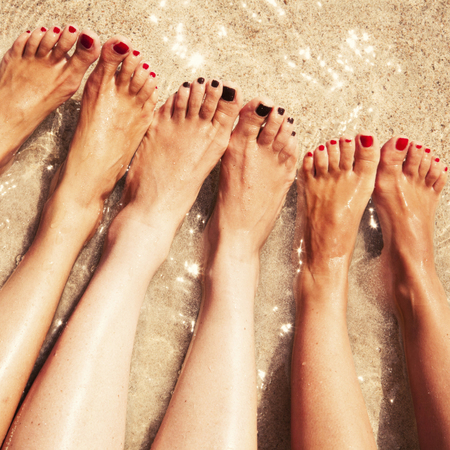One of the most common questions we get asked by patients is “why does my heel hurt?”. While there can be many reasons for heel pain, we as podiatrists categorise heel pain into these primary causes: plantar fasciitis, Achilles tendonitis, bursitis and nerve pain.
- A very common cause of heel pain is plantar fasciitis, which is an inflammation of the band of tissue (the plantar fascia) that extends from the heel to the toes. When people suffer from the condition, the fascia becomes irritated and then inflamed (swollen and red), resulting in heel pain or pain in the arch of the foot. Pain in the plantar fascia is a telling sign that there is a biomechanical issue going on in the foot. Plantar fasciitis is typically treated with nonsurgical strategies, such as stretching and strengthening exercises, rest, shoe inserts (such as orthoses) and footwear modifications.
- Achilles tendonitis is the inflammation of the Achilles tendon, and can also be a cause of heel pain. This condition is typically associated with 'overuse' and we see it most frequently in athletic patients who play sports with a high impact on the knees and ankles (such as tennis, netball or ballet). A sudden increase in repetitive activities can put too much stress on the Achilles tendon too quickly, leading to micro-tears or injuries of the tendon. Generally, Achilles tendonitis responds well to conservative treatments and can be aided by exercises which gently strengthen the tendon. If your Achilles tendonitis is linked to a biomechanical issue, our podiatrists can also help by providing orthoses to allow the foot to function in a position which minimises the abnormal forces being applied to the tendon, allowing it to recover and prevent recurrence in the future.
- Bursitis is another cause of heel pain we commonly see - where the 'fat pad' of the heel displays redness and swelling from inflammation of the bursa (the fluid-filled sac inside the heel). The bursa protects the heel from friction and can become irritated and inflamed from footwear (such as tight boots), repetitive use or overuse or from blunt force impact (such as falls or sporting injuries). Additionally, biomechanical and gait abnormalities might also place additional stress on the bursa. Bursitis may be able to be treated with my simple home treatments, such as wearing broad shoes which aren't too tight on the foot. Rest, ice and elevation may also help to alleviate discomfort. If this doesn't help, a podiatrist can perform a full biomechanical assessment of your feet and gait, and may even refer you for further imaging (x-ray or ultrasound).
- A less common cause of heel pain is related to the nerves in the foot. Nerve pain in the heel will feel like a burning or electrical pain/sensations radiating down the foot from the heel towards the toes. Podiatrists will generally try conservative treatments in the first instance, which may include: a short course of anti-inflammatory medication, padding and offloading of the nerve entrapment site or stretching and strengthening exercises.
Whatever your heel pain, we encourage you to see a podiatrist for a proper diagnosis. We are experts in the foot, ankle and lower limb, and our training helps us effectively get to the cause of the pain.




